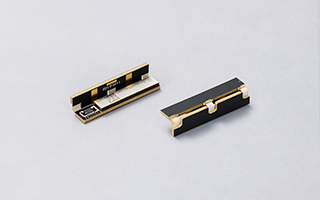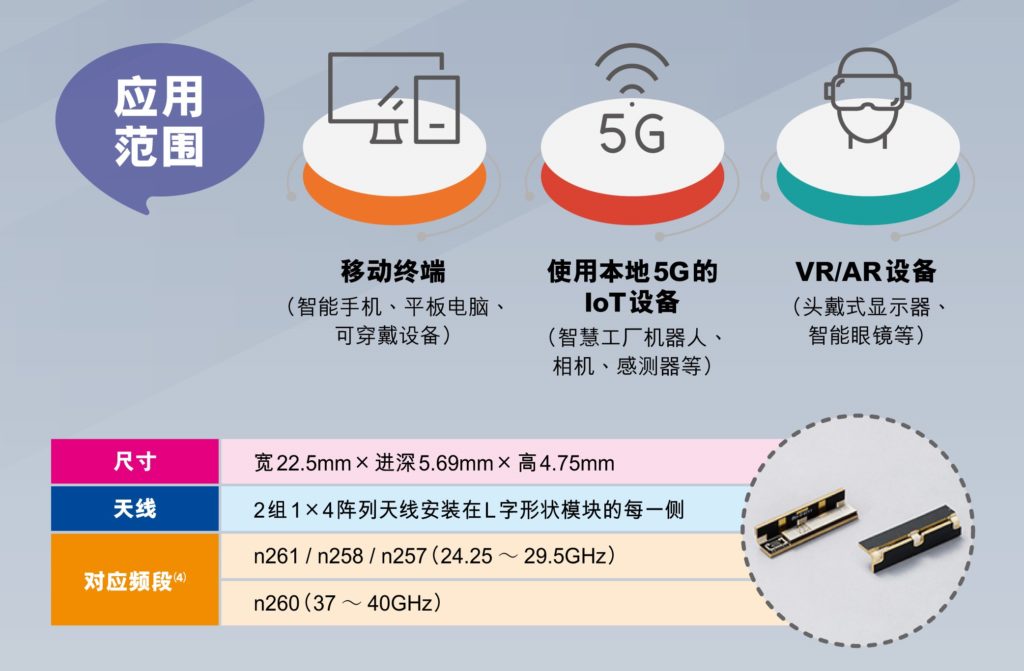

In order to realize more stable communication, it is necessary to transmit and receive radio waves on the side of the terminal, but the thinning of the terminal is often limited due to the installation of the antenna.
MetroCirc™ is L-shaped, and the antennas are arranged on two substrates facing in different directions, so one RFIC can radiate radio waves in two directions. Thereby, stable millimeter-wave wireless communication is realized, and it contributes to making the terminal slimmer and lowering the manufacturing cost by reducing the number of communication parts.
Features
L-shape design
Murata’s solution – based around the MetroCirc™ mmWave antenna module board has a unique L-shape design that delivers a secure mmWave wireless communication environment in two directions using just a single RFIC. And L-shape design is that it not only helps to cut costs but also makes it possible to maintain the minimal footprint required for the development of smaller smartphones, IoT devices and customer sets.
High-Frequency Performance
Utilize the specialties of MetroCirc to realize the broadband and high gain performance of antenna.
Small & Slim Shape
By bending the MetroCirc, the dead angle inside the terminal is eliminated as much as possible, and the area of the antenna is ensured to a large extent. It achieves high-frequency performance and a small, slim shape at the same time, contributing to the thinning of the terminal itself.
The Heat is Dispersed
The structure in which the heat source IC and the terminal board are tightly bonded can be realized by the L-shaped shape. The heat generated in the module is effectively dispersed, contributing to the high reliability and communication stability of the terminal.

